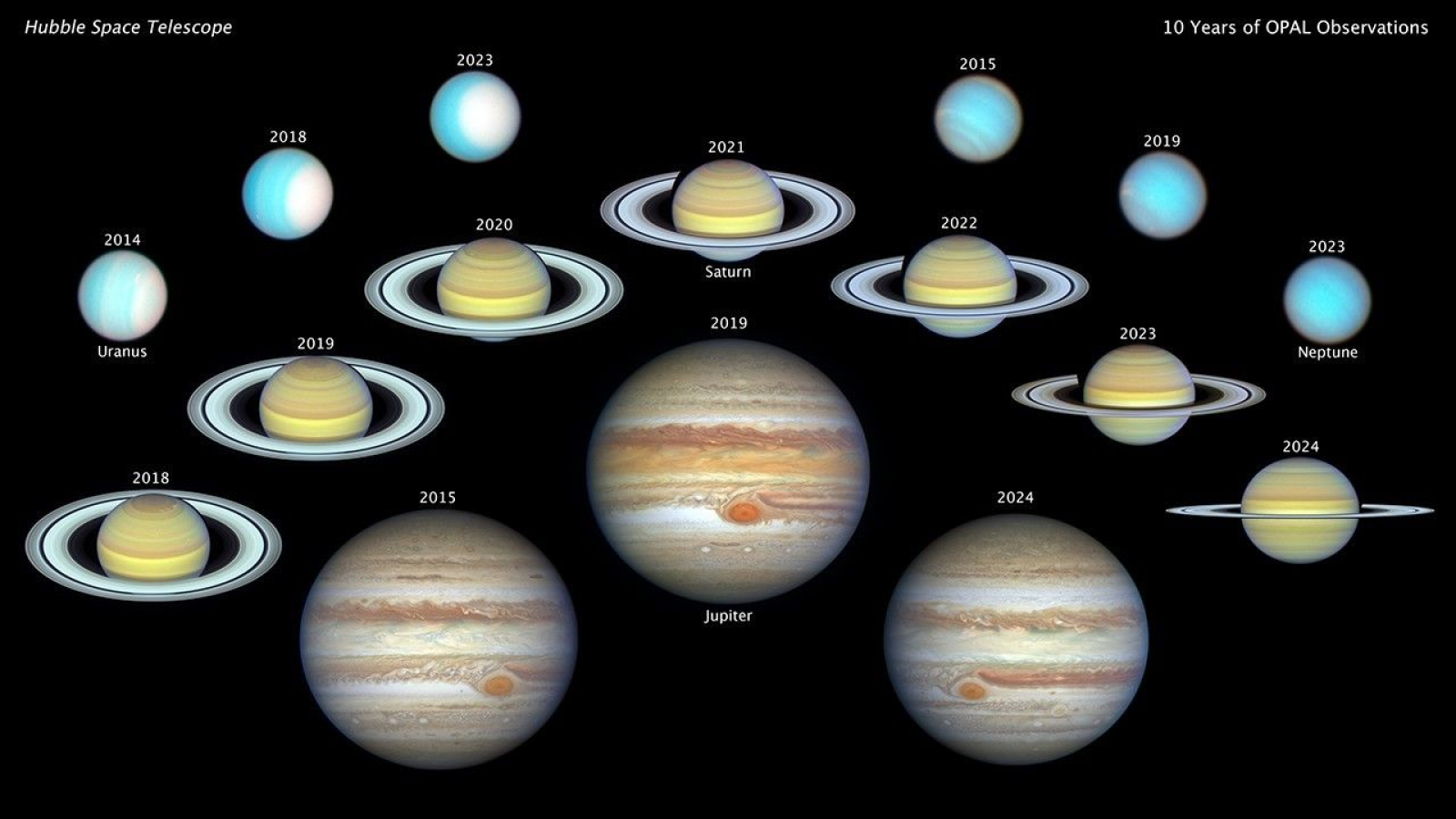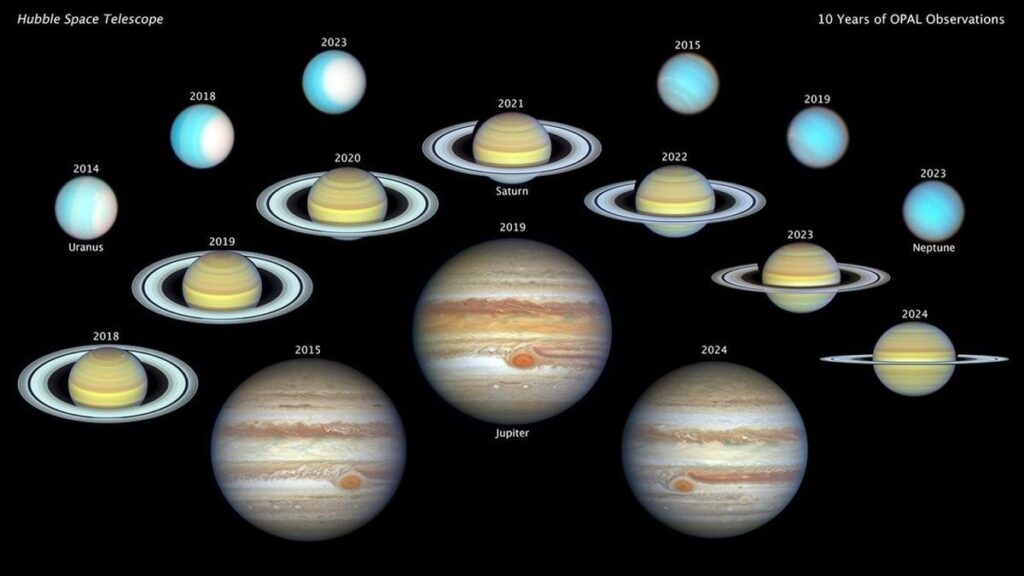
What it is: Our solar system’s four giant outer planets: Jupiter, Saturn, Uranus and Neptune
Where it is: From about 365 million to 2.8 billion miles (587 million to 4.5 billion kilometers) from Earth
When it was shared: Dec. 9, 2024
Why it’s so special:
This iconic montage features images of Jupiter, Saturn, Uranus and Neptune captured between 2014 and 2024 as part of the Hubble Space Telescope’s Outer Planet Atmospheres Legacy (OPAL) project. Through OPAL, scientists aim to understand the outer planets’ weather conditions and how they change over time by conducting yearly observations when the planets are closest to Earth. These images allow astronomers to track the atmospheric conditions and dynamics on these planets.
Because of their distance from the sun and different rotational tilts relative to their orbital axes, the outer planets experience seasonal changes and atmospheric conditions unlike those we’re used to on Earth. Studying these differences can help astronomers learn more about the conditions on planets beyond our solar system.
Related: 32 alien planets that really exist
Jupiter has a 12-Earth-year orbit and a 3-degree tilt, leading to limited seasonal changes. OPAL’s images from 2015 to 2024 — particularly those from 2015, 2019 and 2024 highlighted in the montage — showcase shifting cloud structures and the Great Red Spot’s changing position. Astronomers utilized various filters (not shown here) to analyze cloud thickness, large storms, altitudes and chemical compositions.
Saturn, on the other hand, is tilted 26.7 degrees on its axis, leading to significant seasonal changes. Because it is a ringed system, Hubble can capture the rings edge-on. In these views, the superthin rings almost disappear. This occurs every 15 years, with the next event set to occur in March and November 2025. Observations have shown subtle changes in Saturn’s cloud height and winds each year. Its 29-Earth-year orbit results in seasonal shifts roughly every seven years, with more changes expected during each transition.
Uranus has a nearly 90-degree tilt, causing it to rotate on its side. As a result of the planet’s 84-Earth-year orbit, one hemisphere remains in darkness for 42 Earth years. Hubble has observed the northern polar cap brightening annually as it tilts toward the sun. This trend is expected to continue, with the Uranian ring system appearing face-on in 2028.
Neptune’s OPAL observations revealed two significant findings. First, mysterious dark spots were migrating in an unusual fashion, before disappearing. Second, there is a connection between Neptune’s changing cloudy weather and the 11-year solar cycle. Despite receiving only about 1/1000 of the sunlight Earth gets, Neptune’s weather appears to be influenced by the sun.
OPAL will continue to monitor the outer giants, and the database will keep expanding so that scientists can observe the long-term changes in the planets’ atmospheres. Hubble is predicted to continue operating into the mid-2030s.
For more sublime space images, check out our Space Photo of the Week archives.
